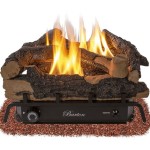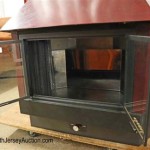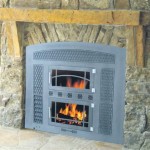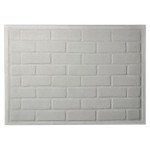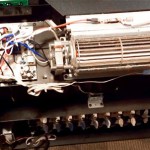Right Corner Gas Fireplace Insert: A Comprehensive Guide
The right corner gas fireplace insert represents a specialized heating appliance designed for installation in the corner of a room, typically converting an existing masonry fireplace into a more efficient and aesthetically pleasing gas-fueled heating source. These inserts offer a compelling alternative to traditional wood-burning fireplaces, providing enhanced control, cleaner operation, and often, improved heating performance. Understanding the features, installation considerations, and maintenance requirements of right corner gas fireplace inserts is crucial for making an informed purchase and ensuring long-term satisfaction.
This guide aims to provide comprehensive information about right corner gas fireplace inserts, covering aspects such as their benefits, different types available, factors to consider during selection, installation procedures, safety precautions, and ongoing maintenance. The information presented is intended to assist homeowners, contractors, and designers in navigating the complexities of choosing and implementing a right corner gas fireplace insert solution.
Key Benefits of Right Corner Gas Fireplace Inserts
Right corner gas fireplace inserts offer several advantages over traditional wood-burning fireplaces, making them an attractive option for homeowners seeking improved heating efficiency, convenience, and aesthetics. These advantages can be broadly categorized into heating performance, operational convenience, and environmental impact.
One primary benefit lies in heating performance. Gas fireplace inserts, including right corner models, are significantly more efficient than open-hearth wood-burning fireplaces. Traditional fireplaces lose a substantial amount of heat up the chimney, often resulting in a net loss of heat in the room. Gas inserts, on the other hand, are designed to radiate and circulate heat more effectively, providing a more consistent and controlled warmth. Many models feature adjustable thermostat settings and programmable features, allowing for precise temperature control and energy conservation. This capability to efficiently heat a specific area can lead to lower heating costs compared to relying solely on central heating systems.
Operational convenience is another significant advantage. Unlike wood-burning fireplaces that require constant monitoring, loading of wood, and ash removal, gas fireplace inserts offer a hassle-free experience. They can be easily ignited with a switch or remote control, and the flame height and heat output can be adjusted effortlessly. The absence of wood handling and ash removal contributes to a cleaner and more convenient heating experience. Furthermore, gas inserts eliminate the need for storing wood, freeing up valuable space and reducing the risk of insect infestations or fire hazards associated with wood storage.
Finally, right corner gas fireplace inserts contribute to a reduced environmental impact compared to traditional wood-burning fireplaces. Burning wood releases particulate matter into the air, contributing to air pollution. Gas, especially natural gas, burns much cleaner than wood, producing fewer emissions. While gas combustion still generates carbon dioxide, a greenhouse gas, the overall environmental footprint of a gas fireplace insert is generally lower than that of a wood-burning fireplace. Furthermore, some gas inserts are designed to operate with propane, offering an alternative fuel source in areas where natural gas is not readily available.
Types of Right Corner Gas Fireplace Inserts
Right corner gas fireplace inserts are available in various types, distinguished primarily by their venting system, fuel type, and aesthetic design. Understanding these distinctions is crucial for selecting an insert that meets specific heating needs and aesthetic preferences.
A key differentiating factor is the venting system. Direct vent gas fireplace inserts draw combustion air from outside and exhaust combustion gases directly outside through a sealed vent system. This type of venting ensures that the interior air remains clean and free from combustion byproducts. B-vent gas fireplace inserts, also known as natural vent inserts, use the existing chimney for venting. These inserts require a properly sized and functional chimney liner to ensure safe and efficient venting. Vent-free gas fireplace inserts, also known as ventless inserts, do not require any venting. They are designed to burn fuel very cleanly, minimizing the production of combustion byproducts. However, vent-free inserts are subject to stricter regulations and limitations in some areas due to concerns about indoor air quality and carbon monoxide accumulation.
The fuel type also influences the selection process. Natural gas fireplace inserts are connected to a natural gas line, providing a convenient and reliable fuel source. Propane fireplace inserts are fueled by propane tanks, offering an alternative option for areas where natural gas is not available. The choice between natural gas and propane depends on fuel availability, cost, and personal preference. It is important to ensure that the gas insert is correctly configured for the intended fuel type, as incorrect fuel configuration can lead to inefficient combustion and safety hazards.
Aesthetic design is another important consideration. Right corner gas fireplace inserts come in a wide range of styles, from traditional to contemporary. Some models feature realistic-looking artificial logs, while others offer a more modern appearance with glass media or decorative stones. The finish of the fireplace insert, such as black, brushed nickel, or bronze, can also contribute to the overall aesthetic. The size and shape of the viewing area, as well as the presence of features like remote controls, blowers, and accent lighting, can further enhance the visual appeal and functionality of the insert.
Factors to Consider When Choosing a Right Corner Gas Fireplace Insert
Selecting the appropriate right corner gas fireplace insert requires careful consideration of several factors, including heating requirements, existing fireplace dimensions, venting options, fuel availability, budget, and aesthetic preferences. A thorough assessment of these factors will help ensure that the chosen insert meets the homeowner's needs and expectations.
Heating requirements should be the first consideration. The size of the area to be heated, the insulation levels of the home, and the climate conditions all influence the required heat output of the fireplace insert. Gas fireplace inserts are rated in British thermal units (BTUs), which indicate the amount of heat they can produce per hour. It is important to select an insert with sufficient BTU output to effectively heat the intended space. An undersized insert may struggle to maintain a comfortable temperature, while an oversized insert may consume excessive fuel and create an uncomfortable environment. Consulting with a qualified heating professional can help determine the appropriate BTU rating for specific heating needs.
The dimensions of the existing fireplace opening are critical. The right corner gas fireplace insert must fit snugly within the existing fireplace opening without requiring significant modifications. It is important to accurately measure the height, width, and depth of the fireplace opening and compare these measurements to the dimensions of the available inserts. Some inserts may require custom surrounds or panels to fill any gaps between the insert and the fireplace opening. Insufficient clearance around the insert can lead to overheating and safety hazards.
Venting options dictate the type of gas fireplace insert that can be installed. Direct vent inserts offer the most flexibility, as they can be vented horizontally or vertically through an exterior wall. B-vent inserts require a properly sized and functioning chimney liner, which may necessitate additional work and expense. Vent-free inserts are the simplest to install, but they are subject to regulatory restrictions and may not be suitable for all applications. The existing venting system, or the feasibility of installing a new venting system, will significantly influence the selection process. Professional evaluation of the existing chimney is recommended to determine its suitability for a B-vent insert.
Fuel availability is a practical consideration. If natural gas is readily available, a natural gas fireplace insert may be the most convenient and cost-effective option. If natural gas is not available, a propane fireplace insert can be used, but it will require the installation of a propane tank and a regular supply of propane. The cost of fuel, as well as the convenience of fuel delivery or refilling, should be factored into the decision-making process.
Budget constraints also play a significant role. The cost of a right corner gas fireplace insert can vary widely depending on the type, size, features, and brand. Installation costs, including venting modifications and gas line connections, should also be considered. It is important to establish a realistic budget and compare prices from different retailers and installers. While it may be tempting to opt for the least expensive option, it is important to prioritize quality and safety to ensure long-term satisfaction and peace of mind.
Finally, aesthetic preferences should be taken into account. The appearance of the fireplace insert should complement the existing décor of the room. Consider the style, finish, and viewing area of the insert, as well as any additional features such as remote controls, blowers, and accent lighting. Visiting showrooms and reviewing online catalogs can help visualize different options and identify an insert that aligns with the homeowner's personal taste.
Installation Procedures and Safety Precautions
Installing a right corner gas fireplace insert is a complex process that requires adherence to strict safety regulations and building codes. It is generally recommended to hire a qualified and licensed professional to perform the installation. Improper installation can lead to safety hazards, inefficient operation, and voided warranties.
Prior to installation, it is essential to obtain any necessary permits from local authorities. Building codes vary depending on location, and compliance with these codes is mandatory. The installer should be familiar with local regulations and ensure that the installation meets all applicable requirements.
The installation process typically involves several steps. First, the existing fireplace opening must be prepared. This may involve cleaning the firebox, removing any debris, and ensuring that the opening is properly sized for the insert. Next, the venting system must be installed or modified to accommodate the gas insert. Direct vent inserts require a sealed vent system that extends to the exterior of the building. B-vent inserts require a properly sized and functional chimney liner. Vent-free inserts do not require any venting. After the venting system is in place, the gas insert can be installed. The insert is carefully positioned within the fireplace opening and secured in place. A gas line is then connected to the insert, ensuring a leak-free connection. Finally, the insert is tested to verify proper operation and safety. The flame is adjusted to the appropriate height, and the venting system is checked for leaks.
Safety precautions are paramount throughout the installation process. The gas supply must be shut off before any work is performed on the gas line. All gas connections must be tested for leaks using a gas leak detector. Carbon monoxide detectors must be installed in the vicinity of the fireplace insert to provide early warning of carbon monoxide accumulation. It is also important to follow the manufacturer's instructions carefully and to use only approved components and materials. Improper installation can create a fire hazard or expose occupants to dangerous levels of carbon monoxide.
Maintenance Requirements for Right Corner Gas Fireplace Inserts
Proper maintenance is essential for ensuring the safe and efficient operation of a right corner gas fireplace insert. Regular maintenance can prevent problems, extend the life of the insert, and maintain its aesthetic appeal. Maintenance tasks typically include cleaning, inspection, and component replacement.
Cleaning the gas fireplace insert is a relatively simple task that should be performed regularly. The viewing glass should be cleaned with a non-abrasive glass cleaner to remove any soot or residue. The firebox and burner assembly should be inspected for debris and cleaned with a vacuum cleaner or soft brush. The logs or media should be carefully cleaned to remove any dust or soot. Accumulation of dust and debris can affect the efficiency of the insert and create a fire hazard.
Regular inspection is crucial for identifying potential problems. The venting system should be inspected for blockages or damage. The gas line connections should be checked for leaks. The burner assembly should be inspected for corrosion or damage. The pilot light should be checked for proper operation. Any signs of wear or damage should be addressed promptly to prevent further deterioration. A qualified technician should perform a comprehensive inspection at least once a year.
Component replacement may be necessary over time. The pilot light assembly, thermocouple, and gas valve are common components that may need to be replaced. The logs or media may also need to be replaced if they become damaged or discolored. It is important to use only approved replacement parts to ensure proper operation and safety. Consult the manufacturer's instructions for recommended replacement intervals and procedures.

Chicago Corner 40re Designer Gas Fireplace Regency

Flex 50rc Bxr Right Corner Fireplace Insert Ecosmart Fire
Corner Two Sided Gas Fireplace Heat Glo

Lx2 Corner Gas Fireplace Right Natural The Center

Right Corner Fireplace Modern Gas Experts

Vantage Hearth B Vent Gas Corner Fireplace

36 Right Corner Fireplace Fireside Home Solutions

Vantage Hearth Direct Vent Gas Corner Fireplace

Lx2 3 Sided And Corner Gas Fireplaces Valor

Corner Series Direct Vent Gas Fireplace By Majestic S Fireplaces


